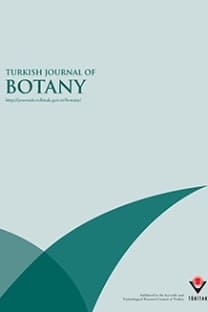Genetic improvement of rice for biotic and abiotic stress tolerance
Biotic stress, Bt rice, genetically modified rice, drought, fungal resistance, herbicide tolerance
Genetic improvement of rice for biotic and abiotic stress tolerance
Biotic stress, Bt rice, genetically modified rice, drought, fungal resistance, herbicide tolerance,
___
- Alcantara EP, Aguda RM, Curtiss A, Dean DH, Cohen MB (2004). Bacillus thuringiensis ∂-endotoxin binding to brush border membrane vesicles of rice stem borers. Arch Insect Biochem 55: 169–177.
- Alfonso-Rubi J, Ortego F, Castanera P, Carbonero P, Diaz I (2003). Transgenic expression of trypsin inhibitor CMe from barley in indica and japonica rice, confers resistance to the rice weevil Sitophilus oryzae. Transgenic Res 12: 23–31.
- Ariizumi T, Kishitani S, Inatsugi R, Nishida I, Murata N, Toriyama K (2002). An increase in unsaturation of fatty acids in phosphatidylglycerol from leaves improves the rates of photosynthesis and growth at low temperatures in transgenic rice seedlings. Plant Cell Physiol 43: 751–758.
- Babu RC, Zhang JX, Blum A, Ho THD, Wu R, Nguyen HT (2004). HVA1, an LEA gene from barley confers dehydration tolerance in transgenic rice (Oryza sativa L.) via cell membrane protection. Plant Sci 166: 855–862.
- Bashir K, Husnain T, Fatima T, Latif Z, Riaz N, Riazuddin S (2005). Novel indica basmati line (B-370) expressing two unrelated genes of Bacillus thuringiensis is highly resistant to two lepidopteran insects in the field. Crop Prot 24: 870–879.
- Bernal CC, Aguda RM, Cohen MB (2002). Effect of rice lines transformed with Bacillus thuringiensis toxin genes on the brown planthopper and its predator Cyrtorhinus lividipennis. Entomol Exp Appl 102: 21–28.
- Bray EA, Bailey-Serres J, Weretilnyk E (2000). Responses to abiotic stresses. In: Gruissem W, Buchannan B, Jones R, editors. Biochemistry and Molecular Biology of Plants. Rockville, MD, USA: American Society of Plant Physiologists. pp. 1158–1249. Breitler JC, Vassal JN, Catala MDM, Meynard D, Marfa V, Mele E, Royer M, Murillo I, Segundo SB, Guiderdoni E et al. (2004).
- Bt rice harbouring cry genes controlled by a constitutive or wound-inducible promoter, protection and transgene expression under Mediterranean field conditions. Plant Biotechnol J 2: 417–430
- ISSN: 1300-008X
- Yayın Aralığı: 6
- Yayıncı: TÜBİTAK
Ammad ABBAS, Muhammad Atif IQBAL, Mehboob-ur RAHMAN, Andrew H PATERSON
HİKMET BUDAK, LUIGI CATTIVELLI, GERMAN SPANGENBERG
Expression profiling of PAP3, BZIP, and P5CS genes in soybean underdrought stress conditions
Valiollah SOLEIMANI, Jafar AHMADI, Saber GOLKARI, Behzad SADEGHZADEH
Emre AKSOY, Ufuk DEMİREL, Zahide Neslihan ÖZTÜRK, Sevgi ÇALIŞKAN, Mehmet Emin ÇALIŞKAN
Mucip GENİŞEL, Yavuz DEMİR, İrfan TERZİ, Serkan ERDAL, Ebru GENÇ, Hülya TÜRK
Overexpression of a soybean expansin gene, GmEXP1, improvesdrought tolerance in transgenic tobacco
Thanh Son LO, Hoang Duc LE, Vu Thanh Thanh NGUYEN, Hoang Ha CHU, Van Son LE, Hoang Mau CHU
Application of data analysis in cold stress: a case study of Nicotiana benthamiana
İbrahim KOÇ, Zihni Onur ÇALIŞKANER, Ertuğrul FİLİZ
Identification of bacterial leaf blight resistance genes in wild rice of eastern India
Anil Kumar SINGH, Ekta DHARMRAJ, Rohini NAYAK, Pawan Kumar SINGH, Nagendra Kumar SINGH
Genetic improvement of rice for biotic and abiotic stress tolerance
MAHMOOD UR RAHMAN ANSARI, Tayyaba SHAHEEN, SHAZAI BUKHARI, TAYYAB HUSNAIN
Hasan Özgür ŞIĞVA, Ahmet Fikret FIRAT, Gülden HAZARHUN, Ahmet İPEK
